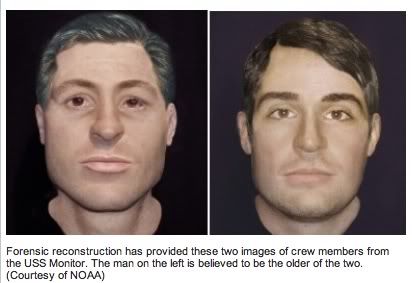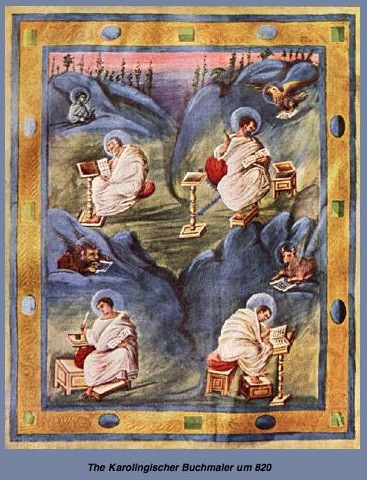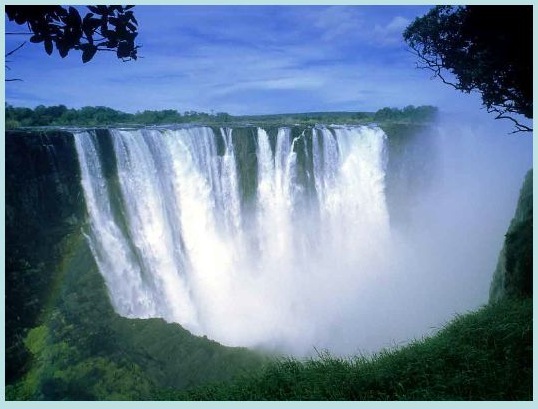And the river we have lost
Three centuries ago, the river meandered this way and that through a dense forest of willow and sycamore, elderberry and wild grape. Its overflow filled vast marshlands that were home to myriad waterfowl and small animals. Steelhead trout spawned in the river, and grizzly bear roamed its shores in search of food. So lush was this landscape and so unusual was it in the dry country that the river was a focus of settlement long before the first white man set foot in the area. Indians relied on the river and the adjacent woodlands for food and the raw materials from which they made almost everything else. They built their villages near the river and bathed each morning in its waters. When the first European visitors passed through the area in the eighteenth century, more than two dozen Indian villages lined the river’s course to the sea. The first white visitors, Spanish explorers in search of possible sites where they could establish missions, were also drawn to the river. They marveled at its beauty, named it after a cherished religious site near their homeland, [La Porciúncula], and noted the potential of the gardenlike setting for settlement…
from The Los Angeles River: Its Life, Death, and Possible Rebirth by Blake Gumprecht
Here’s what it looks like now:
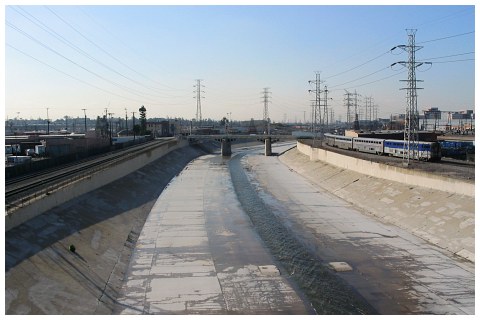
What killed this gardenlike river? Floods and water rights. The Los Angeles River was a wild one, prone to flooding in the rainy season and in the spring. Here’s what it looks like when it’s flooding:
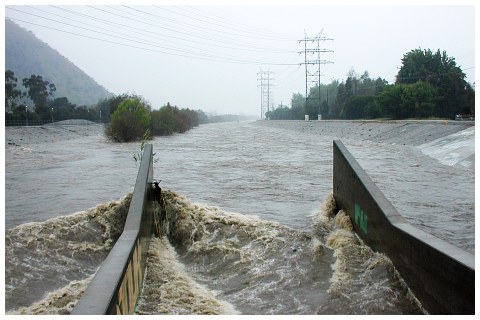
As the city grew, the river breaching it’s banks and taking out homes and businesses could not be tolerated—rightly so. So they channeled it. Which wouldn’t have killed it off completely, but the other side effect of L.A.’s growth was its thirst. Soon water supplied from the river wasn’t enough to slake that thirst so they started pumping it directly out of the underground aquifer that was the river’s lifeblood.
Even that wasn’t enough after a time. They siphoned off the Colorado River and…well, did you ever see the movie, Chinatown? Old Mr. Mulholland devised a plan to pump the lakes in central California, too.
And the Los Angeles River? Became mostly a sewage channel except for those flooding times in the winter and spring.
There is some hope. People have begun to care about the river and its future. Friends of the Los Angeles River, among others, got the EPA to designate the L.A. River as a navigable waterway, which helps protect in under the Clean Water Act. There are plans for redevelopment and some really nice before and after pictures here.
And parts of it have come back somewhat, tended to and allowed to be semi-wild, like this stretch of the Glendale Narrows:
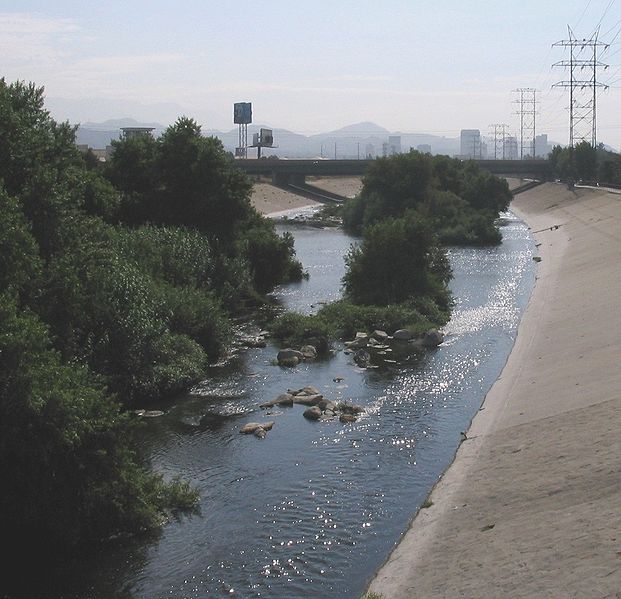
But L.A is broke, the state of California is broke, and our new old governor Jerry Brown has decided to take back the money from redevelopment projects all across the state. Who knows if we’ll ever get our river back?
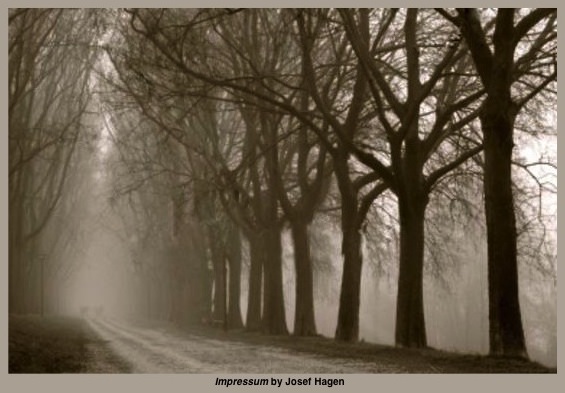 Â
 

